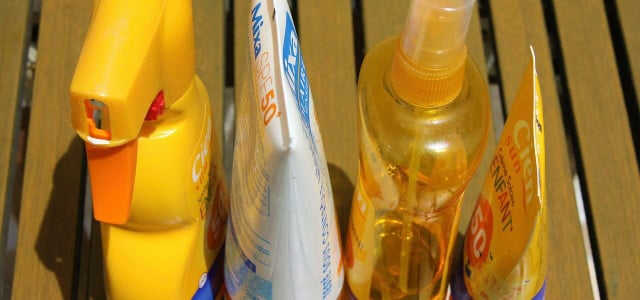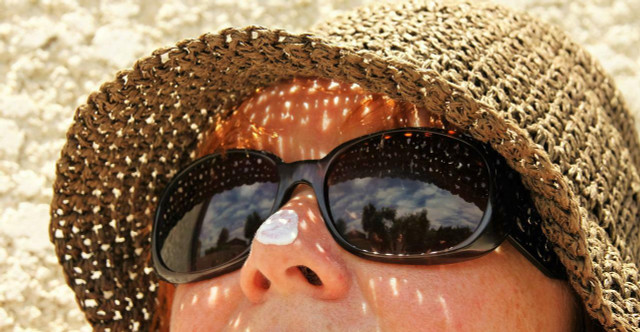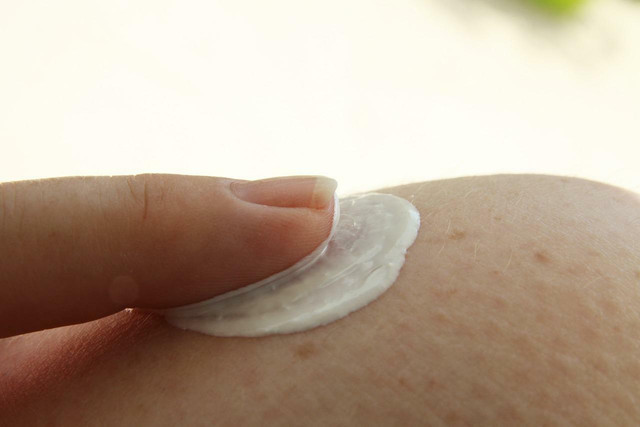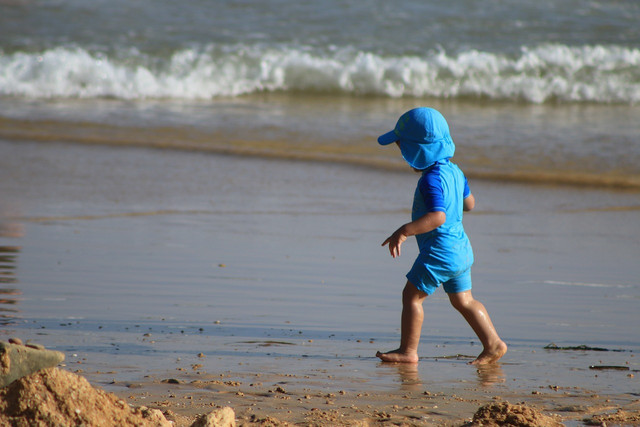
There are different rules about how to use sunscreen. How useful are they? We take a closer look at the most important ones and show which ones make sense – and which ones don’t.
The sun can be an underestimated danger not only on vacation, but also in everyday life. In the worst case scenario, sunburn causes more than just painful redness: the skin, as our largest human sensory organ, “remembers” every sunburn.
As dermatologist Uwe Kirschner writes, just two or three sunburns in childhood can increase the risk of serious diseases such as skin cancer later in life by three to five times. This makes it all the more important to ensure effective sun protection in the summer and, if necessary, beyond by applying sunscreen correctly. Although this cannot completely prevent the development of malignant skin diseases, it can significantly reduce the risk of developing them.
Sunscreen Rule 1: Four heaped tablespoons for the whole body

(Photo: CC0 / Pixabay / chezbeate)
The Federal Office for Radiation Protection defines how much sunscreen is necessary in its information on sun protection. The BfS explicitly recommends around four tablespoons for the whole body, which corresponds to at least two milligrams of cream per square centimeter of skin. Alternatively, dermatologist Uwe Kirschner writes about the “amount of a golf ball” for the whole body.
If you follow these amounts, you can reliably maintain the sun protection factor. Too little cream or incorrect application reduces the sun protection factor, which can lead to sunburn. Even half as much sunscreen, which corresponds to around two tablespoons, reduces the sun protection by two thirds.
Sunscreen rule 2: Apply two fingers wide
This rule shows how you can divide the recommended amount of sunscreen over your whole body. You then need about as much sunscreen per body part as fits on two fingers: To do this, stretch out your index and middle fingers, cover both fingers evenly with the cream and then apply cream to different parts of your body one after the other. Apply this amount to one part of your body at a time on both fingers and then work your way to other parts.
It is important to note that different parts of the body are not all the same size for different people. If someone has a particularly broad back or very dry skin, this amount may not be enough. So it is better to stick to the above recommendation from the Federal Office for Radiation Protection: at least two milligrams per square centimeter of skin.
The consistency of the cream can also be relevant: especially those creams that are available in a spray bottle often have a very thin consistency, so that “two fingers wide” might almost only be enough for those two fingers. With thick creams, on the other hand, you might actually be able to cover an entire leg with the amount that fits on your two fingers.
Tip: When you apply cream to your face, don’t forget your ears and crown.
Sunscreen rule 3: Apply sunscreen in several layers
In general, this sunscreen rule is useful for anyone who spends a lot of time in the blazing sun. The Federal Office for Radiation Protection recommends applying the cream to a large area in good time, i.e. 20 to 30 minutes before you plan to spend time outdoors.
According to the consumer advice center, once the sunscreen has been applied sufficiently and completely, a second “layer” no longer offers any protection.
However, according to the BfS, it is important to apply sunscreen generously after bathing or drying off, and at least every two hours, as otherwise the sunscreen will wear off over time.
Sunscreen rule 4: Consider your own protection time and skin type

(Photo: CC0 / Pixabay / chezbeate)
Another important rule has to do with the skin’s own protection. Depending on the individual skin type, the skin is able to protect itself for a few minutes without sunscreen.
- However, for very light or fair skin types with or without freckles (skin types I and II), this self-protection time is only between ten and 20 minutes.
- People with skin types III to IV (light brown or olive skin) can stay in the sun for a maximum of 30 to 50 minutes without protection.
- People with dark brown to black skin are the most resistant: their own protection time is more than 60 minutes.
However, this self-protection time only tells you approximately how long it takes for redness to appear. The knowledge portal haut.de describes that the thinning of the ozone layer also means that more harmful UV-B rays land on your skin. Both this and UV-A radiation, which penetrates deeper into the skin, promote skin aging and skin cancer with metastasis – even without sunburn.
Chronic UV radiation also promotes these illnesses. Peter Kritscher, occupational physician at the UNIQA insurance group, says: “Skin cancer can therefore develop even if you have never had a single sunburn.”
You should therefore definitely apply sunscreen before going out into the sun, even if you have enough time to protect yourself, for example if you go for a walk.
Tip: You can use a simple formula to work out how long a sunscreen will protect you from sunburn. To do this, multiply your own protection time by the sun protection factor of the cream. The result will give you the time in minutes and tell you how long you can safely stay outside. A simple example calculation: If you have skin type I and lose your own protection after around ten minutes, multiply the sun protection factor (for example 15) of a sunscreen by this number and calculate 10 x 15 = 150 minutes.
Sunscreen Rule 5: Take special precautions for children

(Photo: CC0 / Pixabay / taniadimas)
Many skin damages caused by intense sunlight occur in childhood. On the one hand, this is because children’s skin is very sensitive to external influences. On the other hand, children like to spend a lot of time outdoors and are not yet able to assess the danger of radiation. It is therefore important to observe additional precautions for children in addition to the sunscreen rules mentioned above:
-
Children under two years of age should not be exposed to direct sunlight. This not only means that they should stay in the shade, but that they should also wear UV-protective clothing, sunglasses and a hat on sunny days. There are special sunscreens for babies with a high sun protection factor. But make sure that the ingredients are safe. Since the skin surface of babies and toddlers is much larger relative to their body size than in adults, more harmful substances can penetrate the body through the skin. In 2022, Ökotest tested some creams for their ingredients.
- Some people also advise against applying sunscreen to babies under one year old. It is best to talk to a doctor you trust and decide what makes the most sense for your child.
- Children in particular should be given sunscreen to protect them even in the shade. A special sun cream for children with a high sun protection factor is recommended.
- You should avoid products with chemical UV filters such as oxybenzone or octocrylene for small children, as it is unclear how these affect children’s skin. Instead, sunscreens with natural minerals are a good option.
- Children’s sensitive skin dries out quickly in the sun. It is therefore a good idea to care for it in the evening with an after-sun lotion or moisturizer.
- Children in particular should not stay outside for long periods during the midday hours between 12 and 2 p.m., when UV radiation is at its maximum. The first priority is to avoid UV exposure. Only then should sunscreen be used as a protective measure.
Read more on Techzle\.com:
- Organic sunscreen: effective protection without risk?
- Sunscreen whitens: Tips to prevent it and why it happens
- Treating sunburn: Natural home remedies for too much sun
Revised by Lucas Drebenstedt
** marked with ** or orange underlined Links to sources are sometimes affiliate links: If you buy here, you are actively supporting Techzle\.com, because we then receive a small part of the sales proceeds. More information.